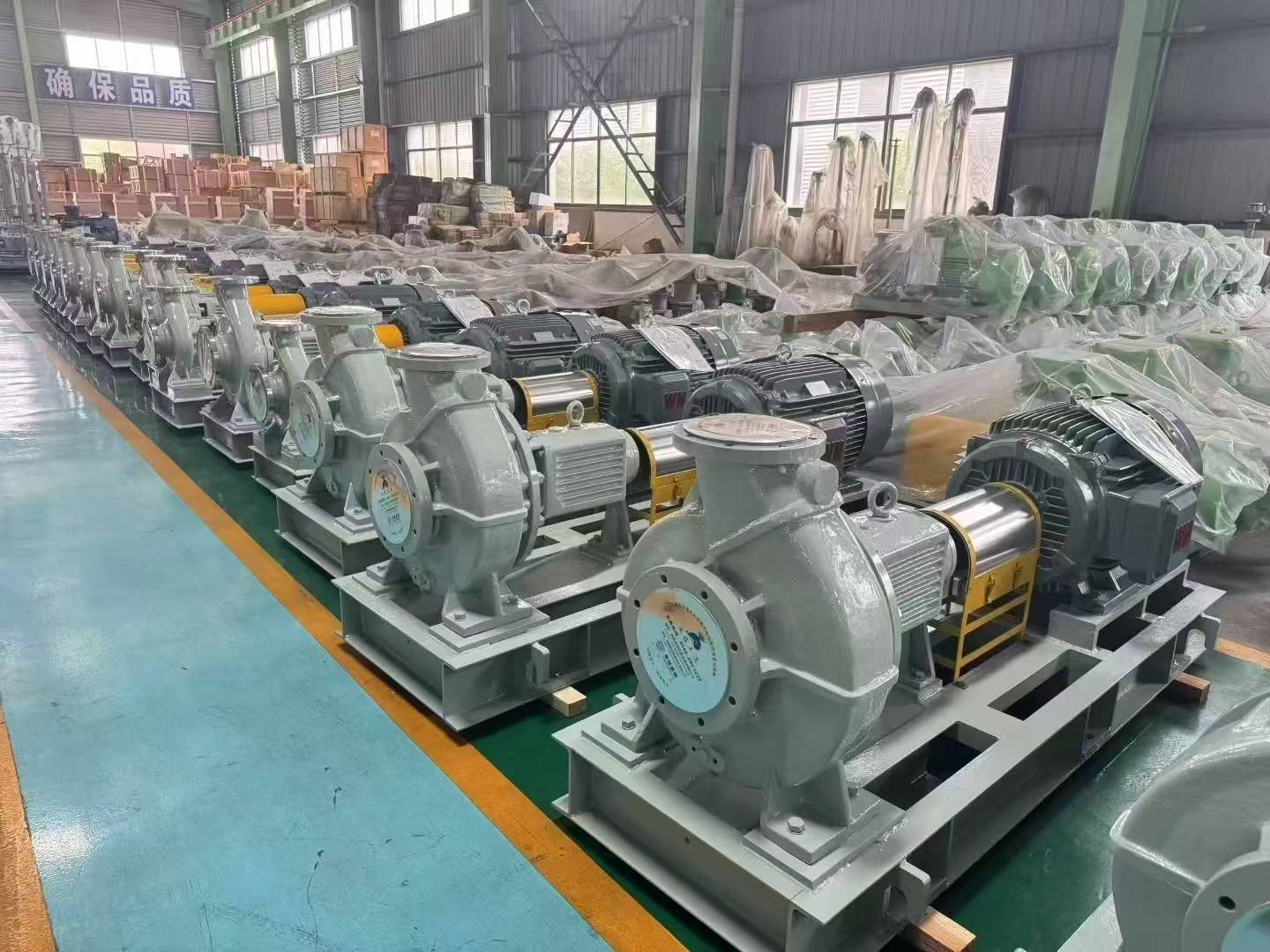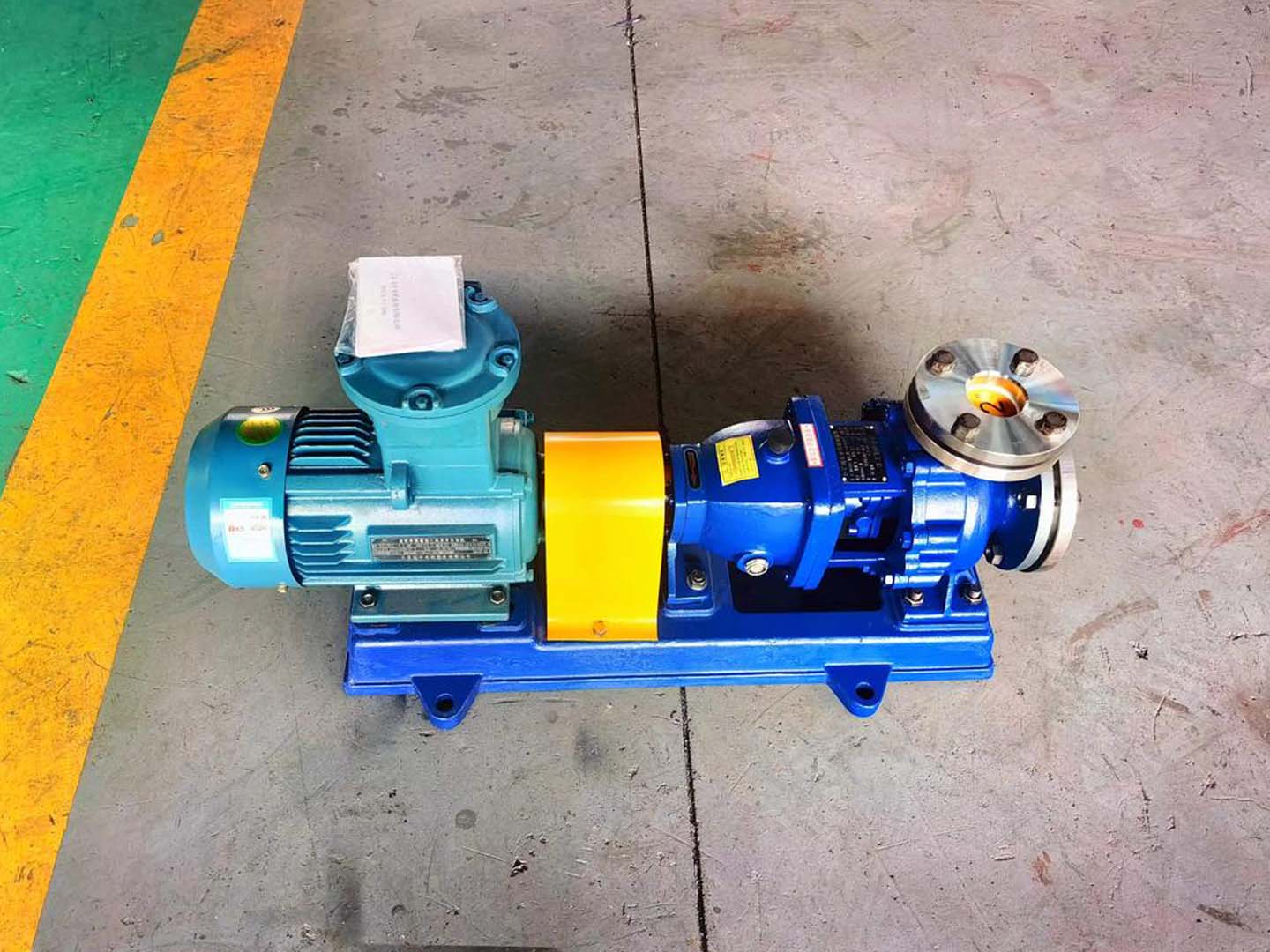Guía completa de bombas centrífugas químicas: desde las características hasta la instalación
1. Descripción general de las bombas centrífugas químicas
Bombas centrífugas químicas Como auxiliares confiables en la industria química, han ganado gran popularidad gracias a sus excelentes características de rendimiento, como resistencia al desgaste, salida de agua uniforme, funcionamiento estable, bajo nivel de ruido, fácil ajuste y alta eficiencia. Su principio de funcionamiento consiste en la generación de fuerza centrífuga cuando el impulsor gira mientras la bomba está llena de agua. Esta fuerza empuja el agua en los canales del impulsor hacia la carcasa de la bomba. Posteriormente, la presión en el centro del impulsor disminuye gradualmente hasta caer por debajo de la presión en la tubería de entrada. Bajo esta diferencia de presión, el agua del depósito de succión fluye continuamente hacia el impulsor, lo que permite que la bomba mantenga la succión y el suministro de agua. Dada la creciente demanda de bombas centrífugas para productos químicos en diversas industrias, es fundamental profundizar en sus detalles técnicos. A continuación, Anhui Shengshi Datang Exploraremos con usted 20 preguntas y respuestas técnicas sobre bombas centrífugas químicas, revelando los misterios técnicos detrás de ellas.

2. Características de rendimiento de las bombas centrífugas químicas
Las bombas centrífugas químicas son muy populares por su resistencia al desgaste, caudal uniforme de agua y otras características. Poseen múltiples características, como adaptabilidad a los requisitos de los procesos químicos, resistencia a la corrosión, tolerancia a altas y bajas temperaturas, resistencia al desgaste y la erosión, funcionamiento fiable, fugas mínimas o nulas, y capacidad para transportar líquidos en estados críticos.
3. Detalles técnicos de las bombas centrífugas químicas
a. Definición y clasificación
Las bombas centrífugas químicas son dispositivos que generan fuerza centrífuga mediante la rotación del impulsor y se clasifican en bombas de paletas, bombas de desplazamiento positivo, etc. Según sus principios de funcionamiento y estructura, las bombas químicas se clasifican en bombas de paletas, bombas de desplazamiento positivo y otras. Las bombas de paletas utilizan la fuerza centrífuga generada por la rotación del impulsor para aumentar la energía mecánica de los líquidos, mientras que las bombas de desplazamiento positivo transportan líquidos modificando el volumen de la cámara de trabajo. Además, existen tipos especiales como las bombas electromagnéticas, que utilizan efectos electromagnéticos para transportar líquidos conductores, así como las bombas de chorro y las bombas de transporte aéreo, que utilizan la energía del fluido para transportar líquidos.
b. Ventajas y parámetros de rendimiento
Bombas centrífugas Ofrecen altos caudales, un mantenimiento sencillo y métricas clave como la potencia de salida y la eficiencia. Las bombas centrífugas presentan varias ventajas notables en su aplicación. En primer lugar, su salida en una sola unidad proporciona un caudal amplio y continuo sin pulsaciones, lo que garantiza un funcionamiento suave. En segundo lugar, su tamaño compacto, diseño ligero y tamaño compacto reducen los costos para los inversores. En tercer lugar, su estructura simple, la cantidad mínima de piezas vulnerables y los largos intervalos de mantenimiento minimizan los esfuerzos operativos y de reparación. Además, las bombas centrífugas se caracterizan por su excelente capacidad de ajuste y un funcionamiento fiable. Cabe destacar que no requieren lubricación interna, lo que garantiza la pureza del fluido transportado sin contaminación por lubricantes.

c. Tipos de pérdidas y eficiencia
Las principales pérdidas hidráulicas incluyen pérdidas por vórtice, resistencia e impacto, siendo la eficiencia la relación entre la potencia efectiva y la potencia en el eje. Las pérdidas hidráulicas en bombas centrífugas, también conocidas como pérdidas de caudal, se refieren a la diferencia entre la altura teórica y la altura real. Estas pérdidas se producen debido a la fricción y el impacto durante el flujo de líquido dentro de la bomba, convirtiendo parte de la energía en calor u otras formas de pérdida de energía.
Las pérdidas hidráulicas en bombas centrífugas constan principalmente de tres componentes: pérdida por vórtice, pérdida por resistencia y pérdida por impacto. Estos efectos combinados crean la diferencia entre la carga teórica y la real. La eficiencia de una bomba centrífuga, también llamada eficiencia mecánica, es la relación entre la potencia efectiva y la potencia en el eje, lo que refleja el grado de pérdida de energía durante el funcionamiento.
d. Velocidad y potencia
La velocidad afecta el caudal y la altura de elevación, y la potencia se mide en vatios o kilovatios. La velocidad de una bomba centrífuga se refiere al número de rotaciones que realiza el rotor de la bomba por unidad de tiempo, medido en revoluciones por minuto (r/min). La potencia de una bomba centrífuga, o la energía transmitida al eje de la bomba por el motor primario por unidad de tiempo, también se conoce como potencia del eje y se mide generalmente en vatios (W) o kilovatios (KW).
e. Altura y caudal
Cuando cambia la velocidad, el caudal y la altura varían según relaciones cuadráticas o cúbicas. Ajustar la velocidad de una bomba centrífuga altera su altura, caudal y potencia en el eje. Para fluidos sin cambios, la relación entre el caudal y la velocidad supera la velocidad misma, mientras que la relación entre la altura y la velocidad es igual al cuadrado de la relación de velocidad. Por otro lado, la relación entre la potencia en el eje y la velocidad es igual al cubo de la relación de velocidad.
f. Número de cuchillas y materiales
El número de álabes suele oscilar entre 6 y 8, y los materiales requieren resistencia a la corrosión y alta resistencia. El número de álabes en el impulsor de una bomba centrífuga es un parámetro crítico que afecta directamente al rendimiento de la bomba. Generalmente, el número de álabes se ajusta según las aplicaciones y necesidades específicas, lo que garantiza un funcionamiento eficiente y estable. Los materiales de fabricación comunes incluyen fundición gris, hierro al silicio resistente a los ácidos, fundición de aluminio resistente a los álcalis, acero inoxidable al cromo, etc.
g. Carcasa y estructura de la bomba
La carcasa de la bomba recoge el líquido y aumenta la presión, con estructuras comunes como los diseños de tipo partido horizontal. La carcasa de la bomba desempeña un papel vital en las bombas centrífugas. No solo recoge el líquido, sino que también reduce gradualmente su velocidad mediante diseños de canales específicos. Este proceso convierte eficazmente parte de la energía cinética en presión estática, lo que aumenta la presión del líquido y minimiza la pérdida de energía debido a canales sobredimensionados. Las estructuras comunes de carcasa de bomba incluyen los diseños de tipo partido horizontal, tipo partido vertical, tipo partido inclinado y tipo barril.
Con las continuas actualizaciones en la tecnología de procesos de las empresas químicas, se imponen mayores exigencias al funcionamiento estable de las bombas centrífugas químicas. Estas bombas desempeñan un papel crucial en la industria química, donde la estabilidad de su rendimiento influye directamente en la fluidez de todo el proceso de producción. Por lo tanto, un profundo conocimiento y una selección racional de las formas de soporte de la carcasa de la bomba son esenciales para garantizar el funcionamiento estable de las bombas centrífugas químicas.